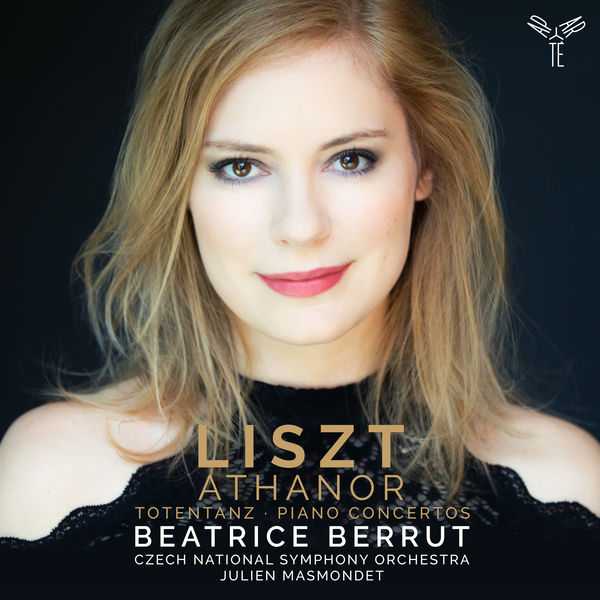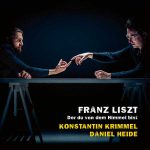

Composer: Ferencz Liszt
Performer: Beatrice Berrut
Orchestra: Czech National Symphony Orchestra
Conductor: Julien Masmondet
Format: FLAC (tracks)
Label: Aparté
Catalogue: AP180
Release: 2018
Size: 932 MB
Recovery: +3%
Scan: yes
01. Totentanz – Paraphrase über “Dies irae”, S126ii
Piano Concerto No. 1 in E flat major, S124
02. I. Allegro maestoso
03. II. Quasi adagio
04. III. Allegretto vivace – Allegro animato
05. IV. Allegro marziale animato
Piano Concerto No. 2 in A major, S125
06. I. Adagio sostenuto assai – Allegro agitato assai – Un poco più mosso – Tempo del andante
07. II. Allegro moderato
08. III. Allegro deciso – Marziale un poco meno allegro – Un poco meno mosso
09. IV. Allegro animato
Athanor. A mysterious name to designate, in alchemy, the long-combustion furnace that produces the philosopher’s stone. This matrix, which symbolises the quest of one who seeks to the Absolute, is a metaphor of Liszt’s approach. With the patience of the alchemist who pursues the perfection of the material, the virtuoso composer and pianist has long matured the genesis of his two Piano Concertos and of the Totentanz: in fact, more than 20 years separate the first sketches of their publication. These three major works are each crossed by a powerfull and captivating leading theme, and driven by a logic of transformation: the Totentanz uses the theme and variations form while the concertos are unifyed by a unique theme that nourishes the whole musical flow through its metamorphoses. Pianist Beatrice Berrut, who was already venturing on the Lisztian paths in her previous record, testifies here to the infinite invention of the composer: she performs the first Concerto with its last variants noted by Liszt himself on the copy of his pupil Hans von Bülow.
The furnace used by alchemists in their search for the philosopher’s matter is indispensable for the maturation of the Great Work. By extension, this furnace, in the shape of a matrix, has become a symbol of their quest for perfection and the absolute. Who does not dream of turning base metals into gold? True alchemists spun out the metaphor and searched not for aurum vulgum but for spiritual fulfilment. And that is where Liszt agreed with them. Eternally dissatisfied, he said that ‘the persistent search for the best possible characterises the true artist’. This search not only had an aesthetic dimension but was also of a moral order, as attest his homage to Paganini: ‘The artist’s role is to awaken and maintain in souls the enthusiasm and passion of Beauty, so close to the passion of Good’.
Why bring together these three works on the same programme? All three were, of course, written for piano and large orchestra. The concertos are both striking for their brevity – compared with other Romantic concertos – as well as the unbroken linking of their movements. Totentanz is in a somewhat different form, being a set of variations on the Gregorian Dies irae theme (based on the Prose of the Dead), but is also of short duration and played without pause.
However it seems to me that there is a strong link between them beyond form. Their joint particularity is their very long gestation: it took 23 years between the first sketch and public performance of the first Concerto, 22 years between the earliest sketches and definitive publication of the second, and 20 years between the rough draft of Totentanz and the version recorded here. Beatrice Berrut



